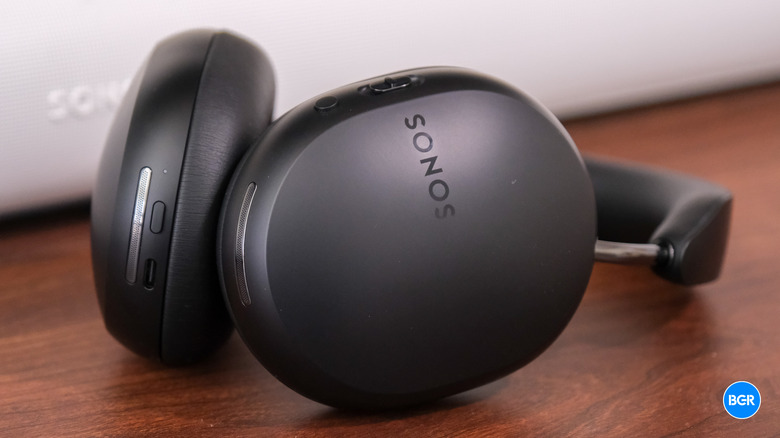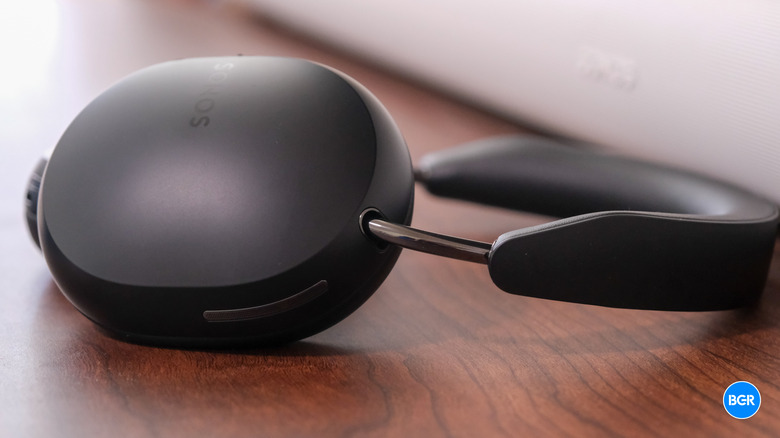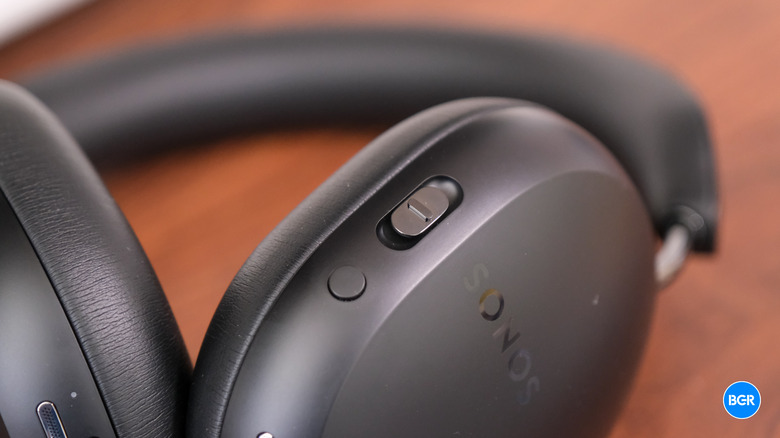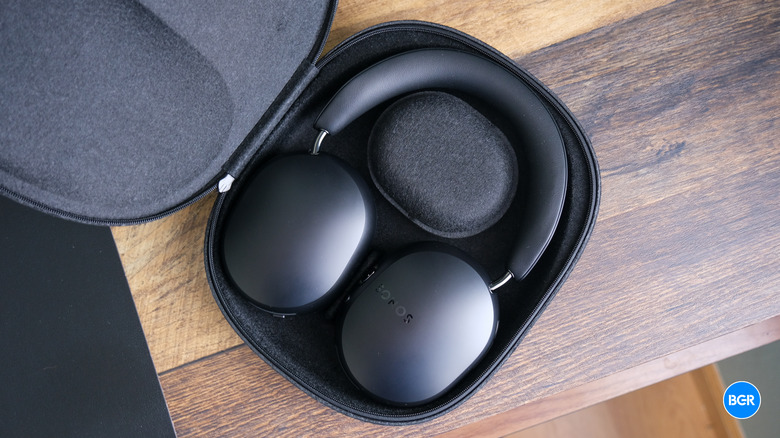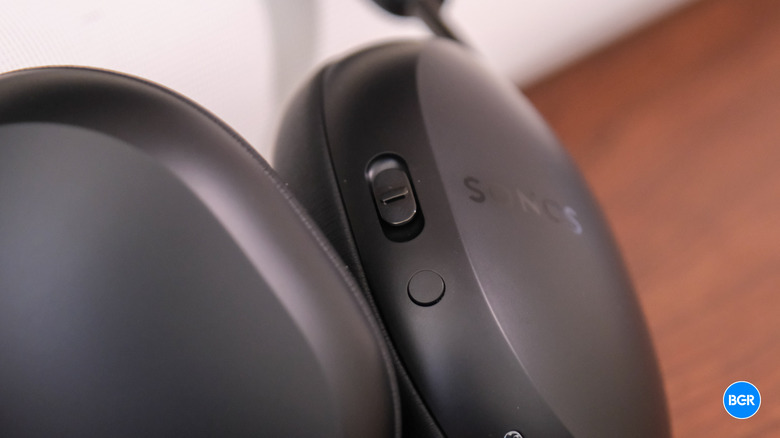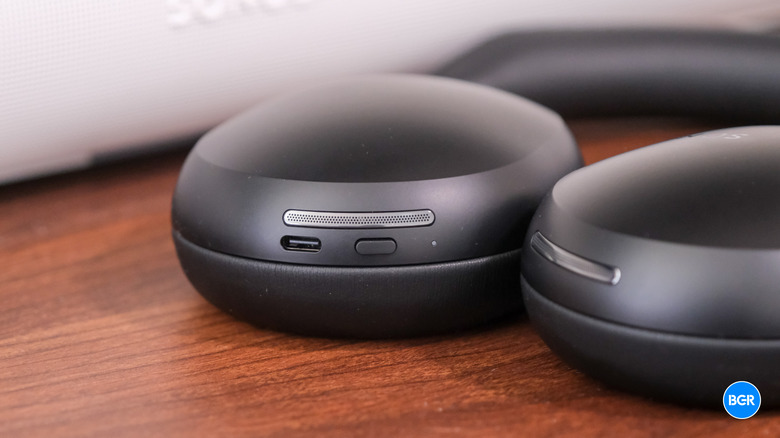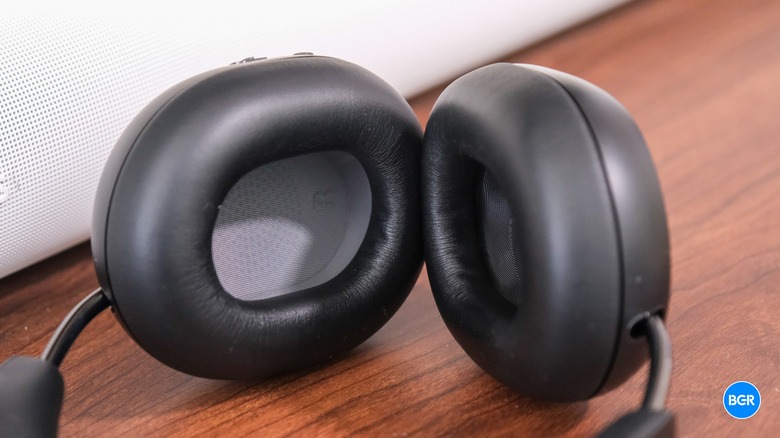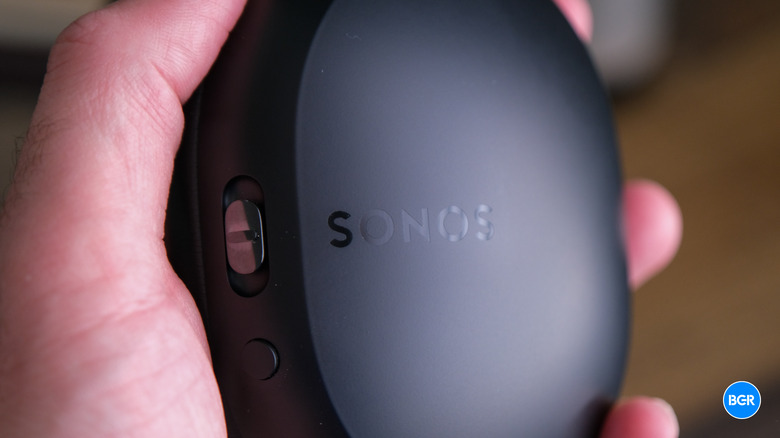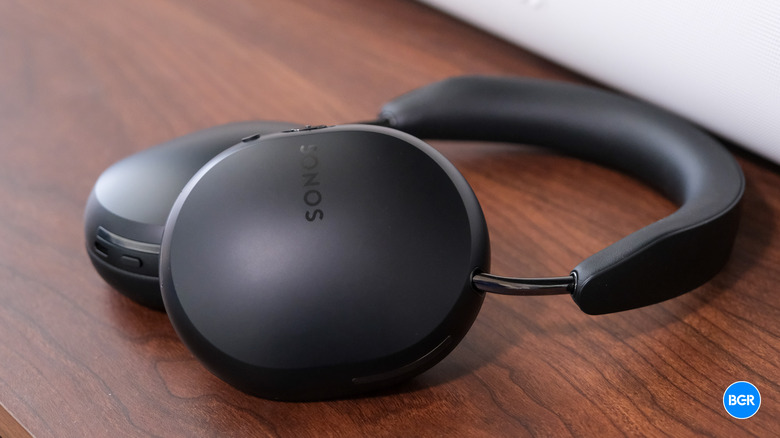Sonos Ace Review: So Close To The Top
- Stunning design
- Great build
- Cool Sonos features
- Excellent audio quality
- Comfortable fit
- Expensive
- App is missing features
| Buy From | List Price | Sale Price | |
|---|---|---|---|
| Amazon | $449 | $449 | See It |
| Sonos | $449 | $449 | See It |
After years of rumors and leaks, it's finally happening — speaker company Sonos is bringing its expertise in building high-end audio products to the headphone world. And it's doing so with a bang. The Sonos Ace headphones aren't just Sonos' first — they're built to compete with the best wireless noise canceling headphones in the industry, like the Sony WH-1000XM5s, the AirPods Max, and the Bose QuietComfort Ultra.
Sonos has done something smart, too — it has built the headphones to fit into its wider ecosystem of products. The headphones don't connect through Wi-Fi, like some early rumors indicated. But they do connect directly to Sonos soundbars to make for a more seamless private listening experience in the living room.
The Sonos Ace headphones aren't cheap, though. On the contrary, they're quite expensive — coming in at $449. Seemingly, gone are the days when the best wireless headphones capped out at around $350. These days, if you want the best, you'll have to shell out $430 for the Bose QuietComfort Ultra headphones, $400 for the Sony WH-1000XM5 headphones, or an eye-watering $550 for the AirPods Max, though to be fair, all of these headphones regularly get discounts.
Can the $449 Sonos Ace headphones truly barge into a mature industry and make a case for themselves? Turns out, they can — but they also can't help but feel slightly half-baked.
Sonos Ace specs
| Dimensions | 7.52 x 6.3 x 3.35 inches |
| Weight | 11.04oz |
| Driver size | 40mm |
| Battery | 30 hours (with ANC) |
| Charging speed | 3 hours listening time in 3 minutes |
| Wireless connectivity | Bluetooth 5.4 |
| Wired connectivity | USB-C (power and data), 3.5mm (with included USB-C to 3.5mm cable) |
| On-ear controls | Power, pairing, play/pause, next, back, volume, TV Audio Swap, noise control, voice control |
| Included accessories | Hard case, cable case, USB-C cable, USB-C to 3.5mm cable |
| Colors | Black, Soft White |
| Price | $449 |
A stunning design and strong build
The overall design of the Sonos Ace headphones is absolutely stunning. They are very well-designed and very well-built, and there's almost nothing I don't like about their design.
The headphones are built with a metal frame and telescoping ear cups, similar to those on the AirPods Max. That metal frame is covered by plush padding under the headband, which extends itself and is covered by nice, soft vegan leather. The ear cups themselves are built with lightweight matte plastic that feels strong and looks great. The ear pads are made with the same plush padding and vegan leather as the headband.
I prefer Sonos using a little more plastic than, for example, Apple. That's not necessarily because of how it looks — though I will say that the plastic used here doesn't look or feel cheap by any means. Instead, it's because of how lightweight it helps make the headphones. At 11.04oz, the headphones are quite a bit lighter than the 13.6oz AirPods Max. They're still heavier than the Bose QuietComfort Ultra and a lot heavier than the Sony WH-1000XM5 headphones, but I think they strike a great balance between design and weight.
Like the AirPods Max, the ear pads can be removed easily since they're attached simply with magnets. This means that if they wear out, you can purchase and install replacements. I do wish the headband could be replaced, too, though — it's another area where headphones often wear out, and it's built with the same materials as the ear cups.
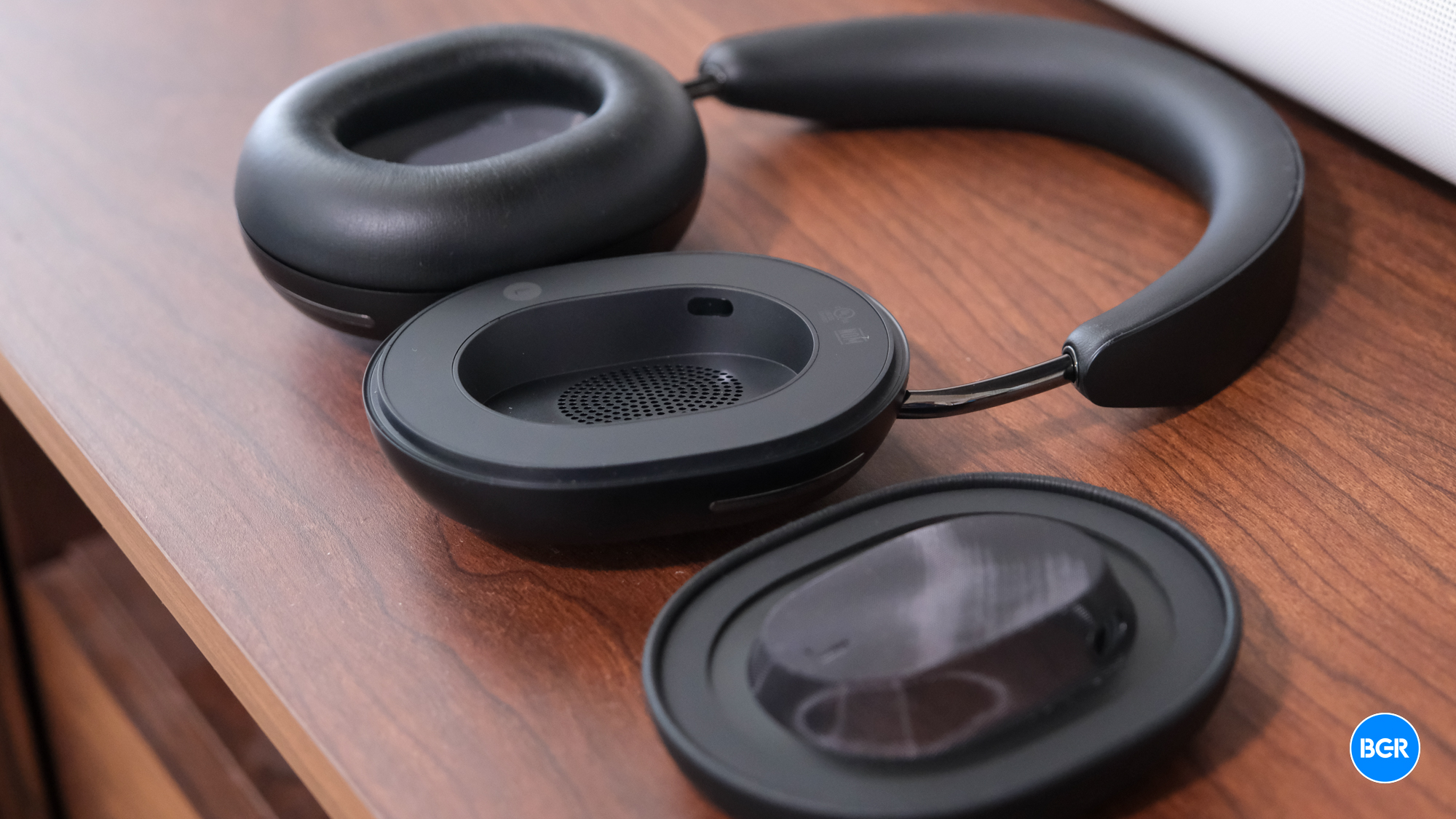
The headphones are quite slim, especially compared to headphones like the AirPods Max. They're actually a very similar size to the Bose QuietComfort Ultra headphones, however the Bose headphones have folding ear cups. I do wish the Sonos Ace headphones could fold up — while they can swivel flat, they could have been even more portable with a foldable design.
The Sonos Ace headphones are available in two colors — Black, and Soft White. I'm reviewing the Black model, which I generally prefer. However, based on online images, the white headphones look great, too.
Sonos Ace controls
The controls are well thought-out, too. The left ear cup houses the power button, which is also used to put the headphones into pairing mode. Next to that is the USB-C port, which is used for charging and wired listening.
Most of the controls are on the right ear cup, though. There's a noise control button that can be used for voice control when held down. However, more important than that is the so-called "Content Key." The Content Key is essentially a slider that can be slid up or down to adjust volume or pushed down to play and pause your audio. Hold it down, and you'll activate one of the headline features of the headphones — TV Audio Swap. We'll get into that feature a little later.
The buttons and Content Key all feel great. They're easy to press, and there's a good amount of travel — so you know you've pressed them. Putting the bulk of the controls in a tactile feeling slider makes it very easy to find the controls you want to use once you learn how they all work. I'm really glad Sonos went for physical controls here, too — and not swipe or gesture controls that can be mis-triggered and are difficult to learn.
In the box
Included with the Sonos Ace headphones are two cables — one USB-C cable that you can use for charging or wired listening, and one USB-C to 3.5mm cable. It might have been nice to include a 3.5mm port on the headphones themselves, but I don't really find that to be a huge deal, especially given the fact that Sonos includes the right cables in the box.
The headphones also come with a very premium carry case. The case is very slim, and built with a textured fabric material. It unzips to open up, and it's easy to place the headphones inside. There's also a small clamshell case for your cables, however I don't find this cable case to be very well designed. I wish it simply zipped and unzipped like the larger case. Instead, it has a small slot that makes it difficult to put in and take out the cables. Forget about only taking out one cable — you'll have to take everything out of the cable case, separate the cable you want, and then place the others back. It's a small issue, but I was a little surprised to find such an unintuitive design on a pair of such well-thought-out headphones. I do like that this cable case magnetically attaches to the inside of the carry case though.
Interesting features and a solid battery
You probably won't drop $449 on a pair of headphones simply for their design. These days, it's the sound quality and features that matter most. The Sonos Ace headphones are packed with features to make the experience of using them better, but they are missing some features that competitors offer. Note, we'll get into the app separately, in the next section.
TV Audio Swap
Perhaps the headline feature has to do with connectivity — TV Audio Swap.
The concept is simple: at the press of a button, the headphones can instantly connect to your Sonos soundbar and play audio through the headphones instead of the soundbar itself. In my experience testing it with the Sonos Arc, it worked quickly, even without pausing playback of video on the TV. When unpairing, I did find that the volume on the soundbar was significantly lower than it had been before pairing, however I suspect this is intentional, and I don't mind turning up the volume manually if it means avoiding blasting audio by accident.
This, of course, isn't the only easy way to get audio from your TV, especially if you live in Apple-land. I regularly use my AirPods Max with not one, but two Apple TVs in my home — one in the bedroom, and one in the living room. This also works at the touch of a button, but the button is on the Apple TV remote, instead of the AirPods Max.
But there are advantages to Sonos' approach. Most notable is the fact that it works with multiple sources. I can't connect my AirPods Max to my Apple TV and then hear audio from my PS5, for example — though, to be fair, I've gotten used to using a cable to connect to the PS5 remote, and I don't find this to be a huge issue. With the Sonos Ace, I can hear audio from any source connected to my TV or from the TV itself, as the Sonos soundbar is the endpoint for all audio coming from your living room.
Now, there are some limitations to this feature. It only works with Sonos soundbars — and at launch, it only works with the Sonos Arc, which is Sonos' highest-end soundbar. Sonos says the feature is coming to the Beam Gen 2, original Beam, and Ray later this year, but it's not here yet.
With the Sonos Arc, I found that TV audio worked quite well. The feature supports spatial audio and head-tracking, so you can get a surround-like experience. I did find that it calibrated head-tracking a little too quickly, though — after looking at my phone for only a few seconds, it had recalibrated, making the audio sound like it was coming from next to me. I wish head-tracking allowed the Sonos Arc to be a fixed source point so I could look at my phone for as long as I wanted without the feature recalibrating. You can also get spatial audio and head-tracking when connected to your phone if you so choose, and you can enable or disable it on your phone and soundbar separately.
Sonos says one pair of Ace headphones can work with up to eight compatible soundbars, so if you happen to have lots of soundbars in your home, you should be able to connect the headphones to them. It'll decide which soundbar to use by checking which soundbar is currently playing, then if two are playing, by using radio signal strength to determine which is closest. If two are playing and the headphones can't figure out which is closest, it'll just connect to the last soundbar it connected to.
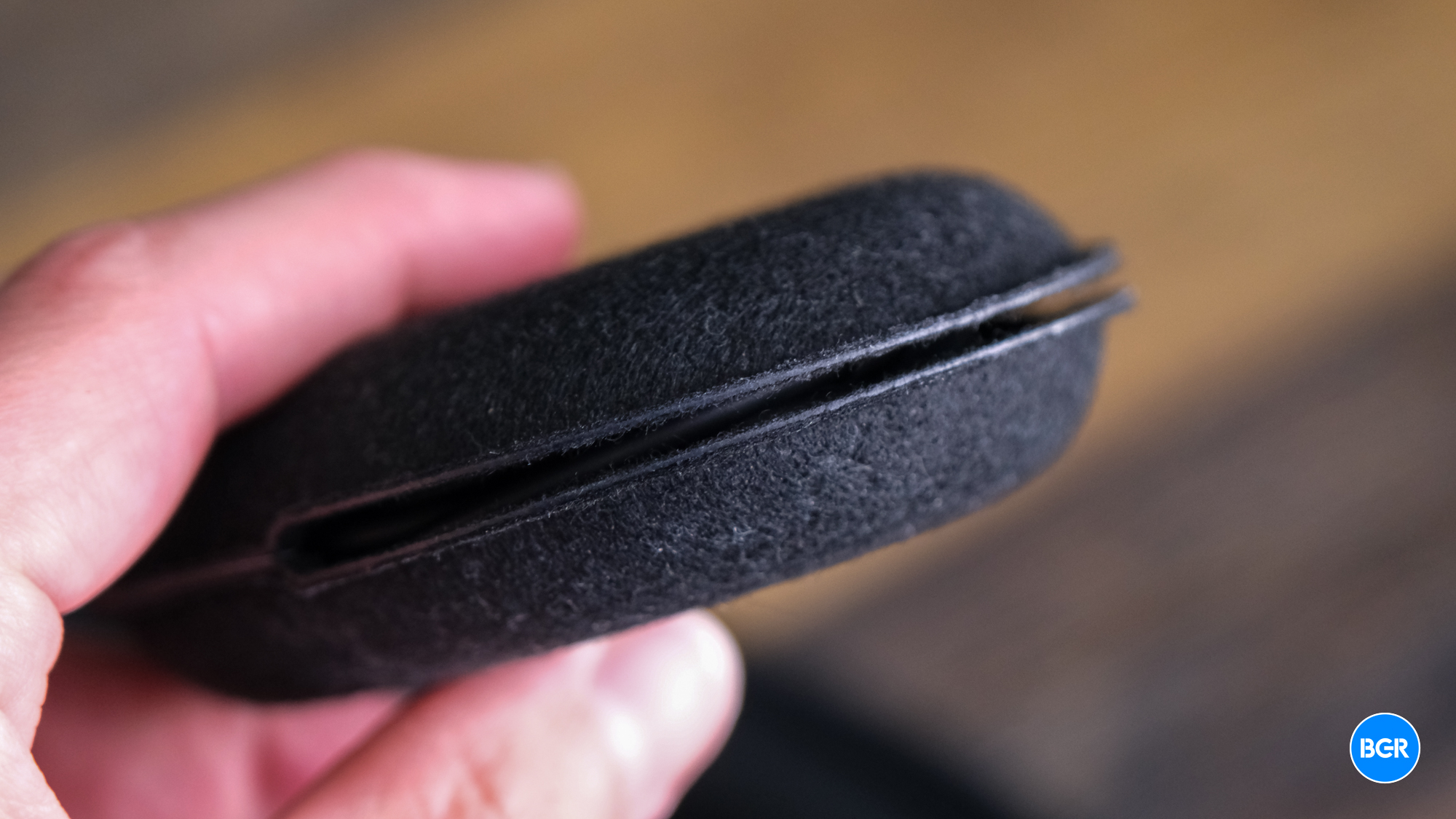
I did find that, at times, there was some audio skipping when the headphones were connected to the Arc, but it was infrequent and lasted only a second or two. It didn't really take away from the experience of using the Sonos Ace headphones.
On top of supporting Sonos' propriety soundbar connectivity, the Sonos Ace headphones also have Bluetooth Multipoint — so you can connect them to up to two Bluetooth audio sources simultaneously.
Battery life
The Sonos Ace headphones offer a battery life of up to 30 hours with noise cancellation enabled, which isn't bad. This battery life beats the Bose QuietComfort Ultra headphones (24 hours) and AirPods Max (rated for 20 hours), and it matches the Sony WH-1000XM5 headphones.
However, I do wish wireless headphones in general would start to get better battery life. There are options out there with higher battery — for example, the Sennheiser Momentum 4 Wireless headphones reach double the Sonos Ace headphones, at 60 hours, while being lighter than the Sonos headphones.
Thankfully, the headphones do charge relatively quickly. Sonos notes that they can gain three hours of use from three minutes of charging, when the headphones are completely out of battery. That doesn't mean that it'll take 30 minutes to fully charge them — they'll charge slower at higher battery percentages, so they don't completely nuke the battery every time they charge. Sonos says that they can be fully charged in under three hours.
The app is a work-in-progress
The Sonos app has gotten a lot of flack from the Sonos community over the past few weeks, thanks in large part to a major redesign that removed many features that Sonos users have come to love. Sonos says it will be re-adding many of these features over time, but I personally have had no issue with the new app. I typically only use the app to set up new speakers and rely on AirPlay to manage streamed content.
But after using these headphones, I do now have some issues with the app. It has a long way to go.
To be clear, the app isn't badly designed. It definitely looks nice. I do wish the settings for the headphones were a little easier to access, for example with a quick access button from the home screen when the headphones are connected. As it is now, you have to jump to the settings menu, then scroll down to the headphones, then find the settings you need. This stands in opposition to apps specifically built for headphones, like the Sony Headphones Connect app, which presents settings right away if Sony headphones are connected.
More important than the simple layout is the fact that the app is missing a lot of features. Let's start with what is there.
From the app, you can toggle noise modes, enable and disable head-tracking for your phone or TV (individually), and turn on or off spatial audio for the TV. You can also manage connections, set up TV Audio Swap, and set which modes the noise control button will cycle through. Lastly, you can enable or disable wear detection, and set up how you want wear detection to act.
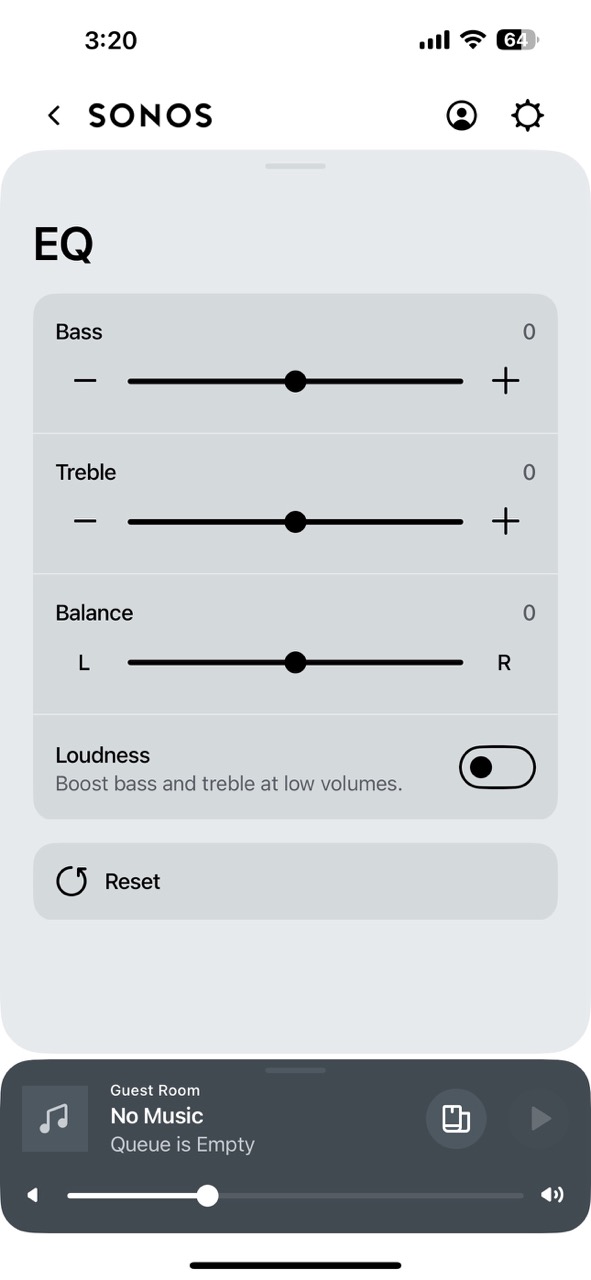
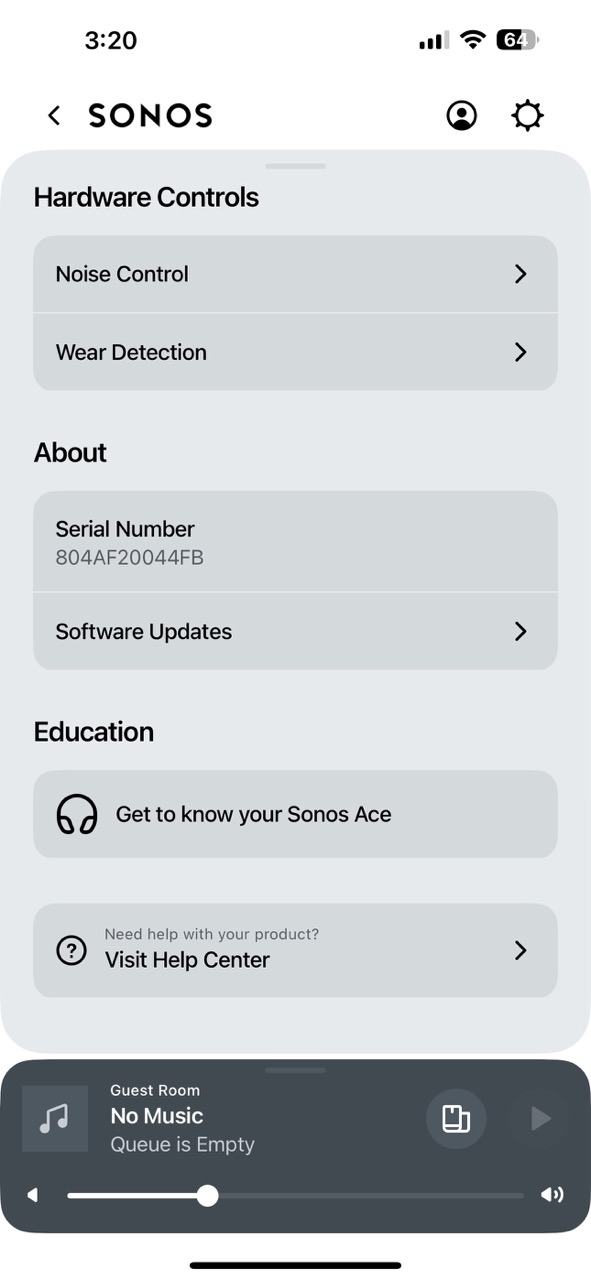
These are cool features, but there's a lot missing. The app does have an EQ, but the EQ is perhaps the most basic EQ you could possibly get, only offering sliders for "bass" and "treble." You won't even get any indication as to exactly what frequencies these sliders control, and the changes that the EQ makes are extremely subtle. The Sonos Ace headphones sound great, as we'll get into — but different people have different preferences, and being able to tweak the sound in a more granular way would make them infinitely more versatile.
Other features are missing that I consider to be pretty basic. I like spatial audio when watching TV — but I'd rather only have it enabled when content is mixed in a surround sound format in the first place. There's no way to set that up — so you can to either deal with stereo audio being artificially "spatialized," or turn it off altogether. All audio, whether it be stereo or even 5.1 surround, is upmixed to 7.1.4 in the headphones, according to Sonos.
More advanced features would be nice, but perhaps aren't as necessary. As previously mentioned, I would love to be able to set a fixed point for head-tracking, and not have the headphones recalibrate when I turn my head. Other advanced features could include things like a voice detection mode that enables Aware mode when you're talking, and location-based modes, like what Sony offers on its highest-end headphones.
The good news? This is all software stuff — not hardware. Sonos could add these features over time, and frankly, I expect them to at least add a few. You certainly shouldn't buy the headphones if you can't deal with what's on offer right now, but I hope Sonos continues to refine the app experience, specifically as it relates to using the Sonos Ace headphones.
Highly comfortable fit
Moving on to the experience of actually wearing the headphones, and I have to say, they're quite comfortable. The headphones are slightly heavier than some of the competition (from Bose and Sony), but they don't really feel heavy, especially compared to something like the AirPods Max.
The padding in the ear cups and under the headband was more than enough to allow the headphones to feel comfortable for hours-long listening sessions, and the soft faux leather covering felt great, too. Like any pair of over-ear headphones, they can get a little warm after wearing them for a long time, but not overly so. The clamp was a nice tightness too — it didn't feel too forceful. And, they weren't too loose, so as to move around a lot during movement.
We don't often talk about comfort while wearing a pair of headphones around the neck, because, for the most part, that doesn't really matter. But I did find that the headphones were shaped in a way that made them easy to wear around the neck when you weren't using them, which was nice.
Top-tier audio quality
Then there's audio quality — which is perhaps the most important aspect to consider for a company like Sony. Thankfully, these headphones sound fantastic.
For starters, the bass response is great. It's tight and clean, and while there is a little more bass than those who want totally natural-sounding headphones will like, it certainly doesn't sound muddy or over-the-top. Kick drums sound nice and thick, while bass guitars and synths are nice and heavy. I ultimately took the bass back a few notches in the EQ, but the bass still sounded great out of the box.
The mids are relatively well-tuned, if not slightly scooped. This is very common in premium consumer-focused headphones and something you can kind of fix with the included EQ, though not with much precision. Mids were still mostly natural and flat, and vocals and guitars were easily able to remain front-and-center in a mix.
The highs, thankfully, sound quite crisp and detailed too. There's good sparkle in the high-end, and while the high-end extension isn't as impressive as you might get from a pair of actual audiophile headphones, the Sonos Ace headphones still sound stunning. I turned the highs up a little with the EQ — I like that extra cymbal sizzle in a mix.
So, how does the sound compare with other high-end headphones?
I found that the AirPods Max were a little wider and had a little more air and crispness in the high-end — however they're also more expensive. The audio was about on-par with the Sony WH-1000XM5 headphones. But with a more advanced EQ, I was able to tune the Sony headphones to be more to my liking. The Sonos headphones had a little more bass than the Bose QuietComfort Ultra headphones, but the Bose headphones also sounded a little wider and more natural in the high-end.
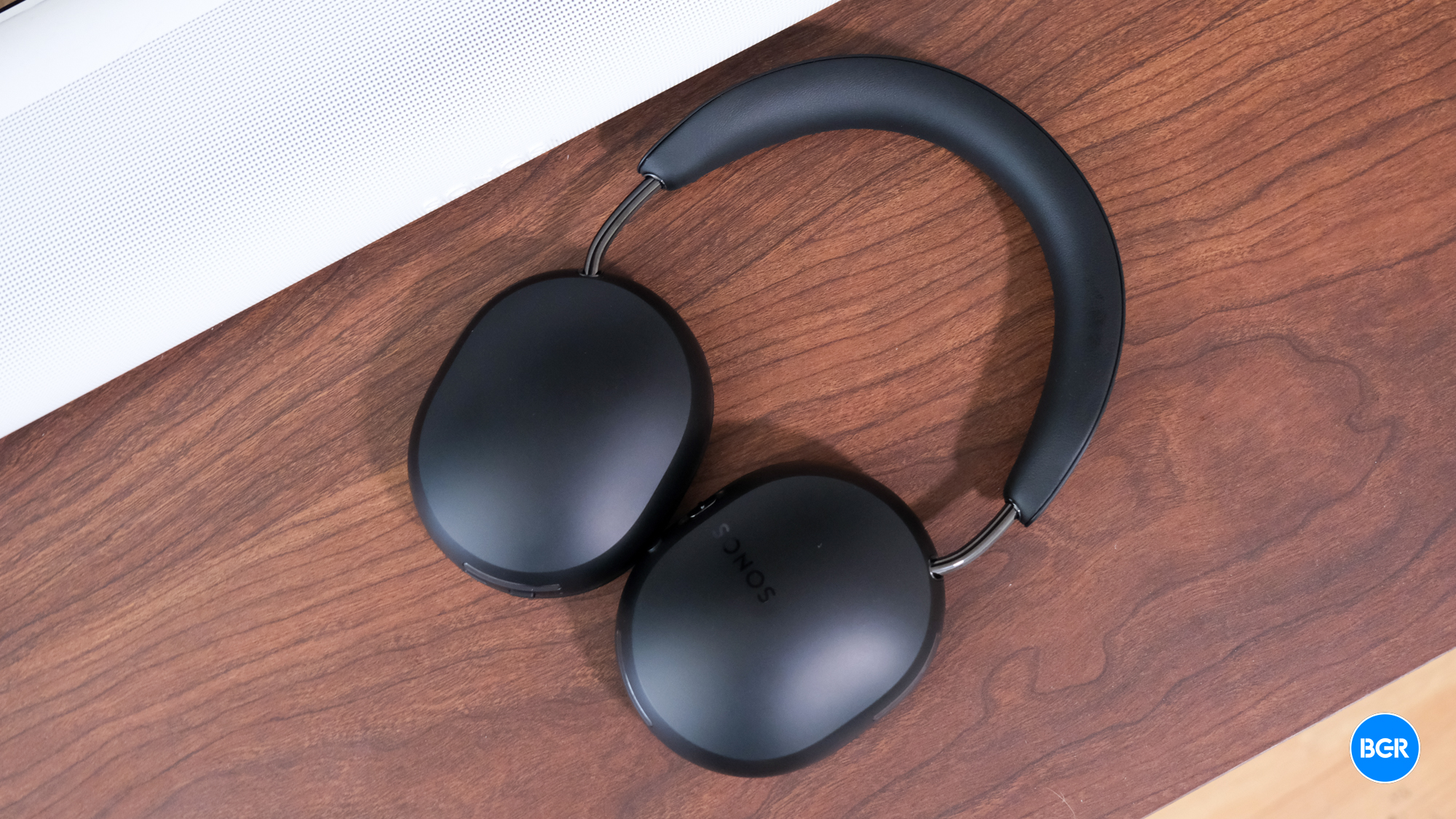
The Sonos Ace headphones have really tough competition here, and they put up a good fight. They sound excellent, but if I were to nit-pick, I would say that the Sony, Bose, and Apple competitors all offer that extra bit more detail that I look for in a pair of headphones.
Again, Sonos, please build a solid EQ that can allow customers to tune the headphones to their preferences.
Noise cancellation
The noise cancellation on these headphones is excellent too. Most impressive is the fact that even with ANC enabled, there's almost no discernible hiss — something that most other options can't avoid. The Bose QuietComfort Ultra headphones, for example, still have slightly more effective noise cancellation, but you'll have to deal with more hiss to get it. You can't really hear it when you're actually listening to music, but it is there.
To be clear, all of these high-end headphones have great ANC, the Sonos Ace headphones included. But the likes of Bose and Apple do have the edge here.
Conclusions
The Sonos Ace headphones have a lot going for them. They boast a stunning design and build, and sound excellent, even if they're not quite as detailed as some of the competition. I really like the TV Audio Swap feature, even if it only works in limited situations right now. The hardware is absolutely there — from the minute you take the headphones out of the box, you'll love their overall look and feel.
But I can't help but feel hope that Sonos will continue to refine the software a little. This isn't me jumping on the bandwagon of disliking the new Sonos app — in general, I don't mind it. But having reviewed all of the top noise-canceling headphones, from companies that have spent years refining the apps for their headphones, it does feel like there are some things missing.
The competition
The main competition here comes from the Sony WH-1000XM5, the Bose QuietComfort Ultra, and the AirPods Max. Let's go over those real quick.
The Sony WH-1000XM5 headphones have more in-built features, and a little more high-end response, making them slightly more detailed. The noise cancellation is slightly better too. However, the Sonos Ace headphones look and feel much nicer, are easier to control, and still sound excellent.
The Bose QuietComfort Ultra headphones have better noise cancellation, are slightly more portable, and are more comfortable. They also have a little more detail in the high end. However, the Sonos headphones, again, have a nicer design and better battery life.
The AirPods Max have a better audio quality overall, with slightly better noise cancellation, and all the features that come with Apple's ecosystem. However the battery life on the AirPods Max is worse, plus they're not as comfortable.
Should I buy the Sonos Ace headphones?
Yes, especially if you have a Sonos Arc and want to use your headphones with your home theater setup.
